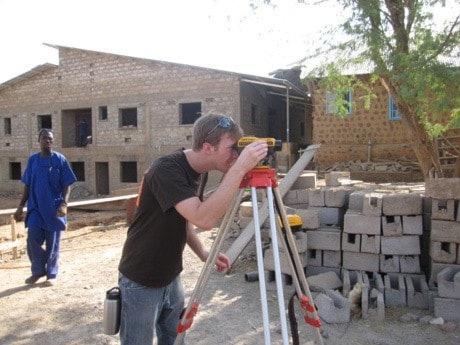For Mitchell Braun, four years of civil engineering education at the University of British Columbia culminated in a recent trip to West Africa. The 23-year-old was part of a volunteer team of architects and engineers from across North America that spent a week in Niger designing the second phase of renovations for Galmi Hospital, which is administered by Serving in Mission. The volunteers travelled overseas with Engineering Ministries International Canada (eMic), a non-profit Christian organization that designs facilities serving the poor in developing countries, such as orphanages, clean water projects and medical centres. “Our purpose is really to show mercy and compassion to these people and really try to improve their lives in any way we can,” said Braun, an Abbotsford resident who is on a four-month internship with eMic. “I kind of went into engineering to be able to do developing world work like this. It’s definitely empowering to finally be able to use my skills to do something useful. It instills a sense of purpose.”Niger ranks near the bottom of the United Nations’ Human Development Index, currently 167th out of 169. High infant mortality (79/1,000 births), high child mortality (167/1,000), low life expectancy (52.5 years), low income (66 per cent of the population lives on less than US$1.25 per day), and low adult literacy (29 per cent of the total population can read and write) are all indicators of the ongoing struggle for life. “It was like walking into the dark ages where it’s amazing if a village even has a well. You’re wealthy if you have a tin roof,” said Braun. “It’s tough to see but it kind of reinforces your purpose there as well.”Galmi Hospital is located on the south edge of the Sahara desert in the heart of Niger. In a country where there’s one doctor for every 30,000 people, the 120-bed facility provides medical care to over 100,000 Nigerians annually who are suffering from life-threatening and debilitating illnesses and injuries. The outpatient clinic also assists more than 300 men, women and children daily. Over the years, the sand, heat and desert sun left the building structurally unsafe in some areas. In 2005, the hospital leadership team initiated a redevelopment project to address these issues. The first phase focused on the surgical ward, while the second concentrated on the maternity wing. “The existing structures are all made of mud bricks and they’re pretty dirty and nasty,” explained Braun, who spent the week surveying the site and collecting data.The team presented a master plan, schematic designs and some details for the maternity ward before they left Galmi. However, a lot of the site work and construction methods still need to be worked out. For example, water and electricity run through the middle of the building and will need to be re-routed. A final report will be presented to the hospital leadership team within the next six months.Since 1981, Engineering Ministries International has worked on more than 700 development and relief projects in over 80 countries, donating more than $5.4 million (56,000 hours) in service. The Canadian office opened its doors in Calgary, Alberta in 2002.
